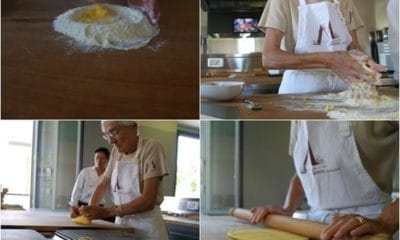Asia
Devouring seafood at the Fethiye Fish Market
The Fethiye fish market is the place where you will find the best restaurants in Fethiye. As well as the tastiest, freshest and cheapest seafood too.
Published
2 years agoon
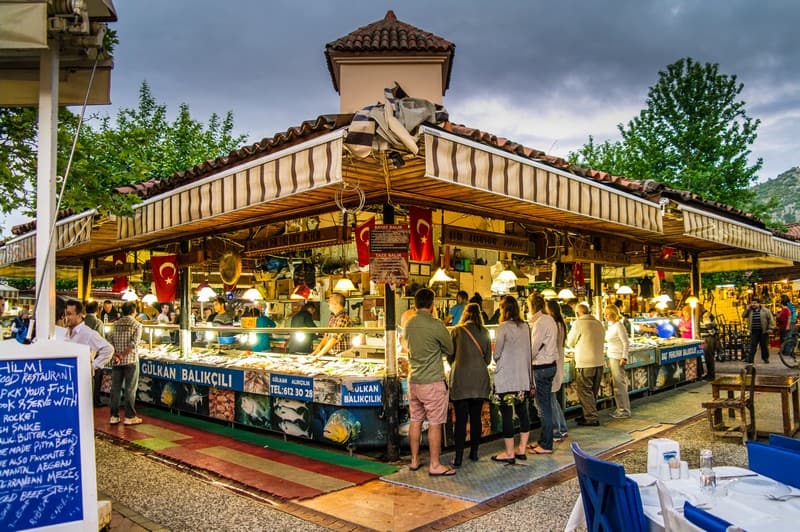
The Fethiye Fish Market is the perfect place to stock up on fresh seafood. Located in the picturesque harbor, the market offers a wide variety of fish, ranging from common favorites like tuna and salmon to more exotic options like swordfish and lobster. In addition to being a great place to buy seafood, the market is also a popular tourist destination.
Visitors can enjoy watching the fishermen unload their catch, bargaining for the best prices, and sampling some of the fresher-than-fresh seafood on offer. Whether you’re a local looking for a great deal on dinner or a tourist searching for a unique experience, the Fethiye Fish Market is definitely worth a visit.
Seafood and local markets. Two things that we love to devour and explore when we are traveling. Combine the two into one evening at the Fethiye Fish Market, and you have us salivating at the very thought.
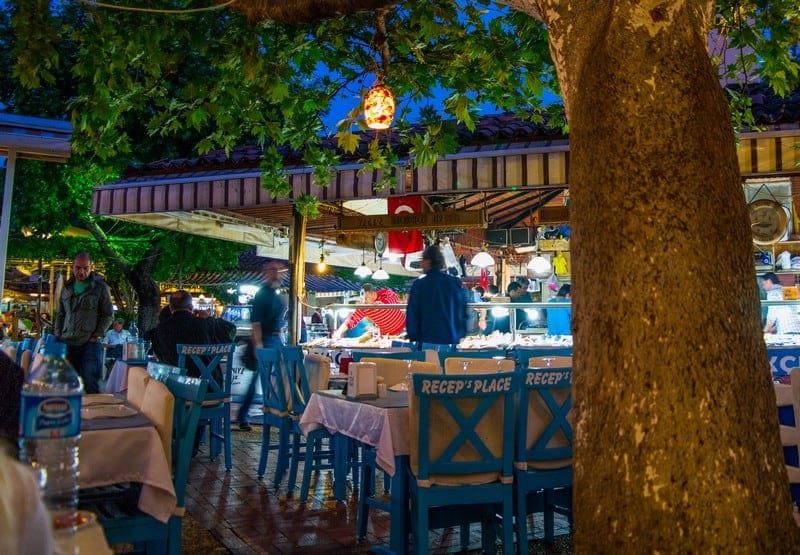
Eating at the Fethiye Fish Market
While we were in Turkey last year for ANZAC Day and our epic Busabout Sail Turkey cruise, we found one of the best restaurants we have ever been to.
We are always on the lookout for excellent food when we travel. And when a recommendation is handed to you from a local at your accommodation, you should listen. Our Fethiye Guesthouse hostel told us that the freshest, tastiest, and cheapest seafood in Fethiye was to be found at the local Fethiye fish market.
We didn’t need much convincing.
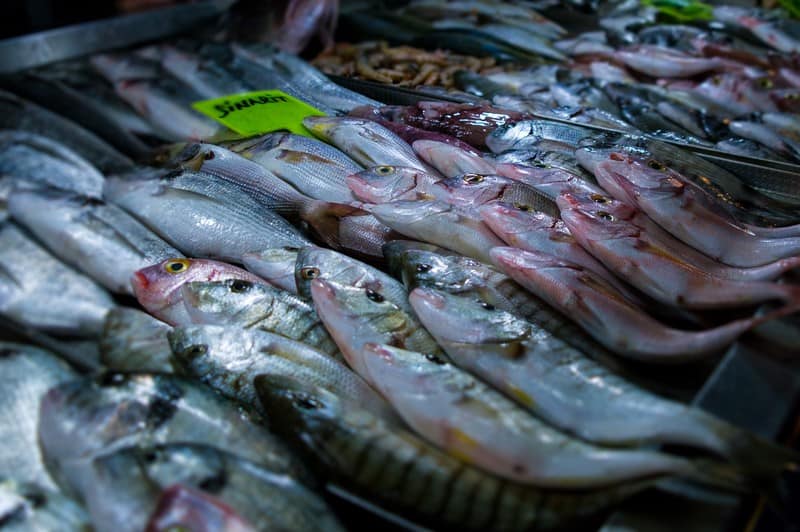
We were ready for a giant meal after a crazy and unique Hamam Turkish bath with semi-naked Turkish men.
But finding the local fish markets in Fethiye is just the beginning.
Walking the streets of Fethiye, you wouldn’t realize that tucked away in one of the squares is a fish market. From the outside, the square looks like a regular block of shops. Jewelers, tour companies, and local supermarkets sit side-by-side, hiding the gem inside.
It isn’t until you walk through one of the four arched entrances into the open-aired courtyard that the Fethiye fish market is revealed in all its glory.

Fethiye Fish Market
As you step from under the awnings, your mind begins to piece together the scene in front of your eyes.
Surrounding the square are tables covered with white linen and sparkling dinner sets—each lit from above with paper lanterns.
In the middle of the square sits a brightly lit stand with local fishers jostling together, selling their fresh bounty from that day’s expedition on the Aegean Sea. Each fisher takes up a small shelf of shaved ice piled high with squid, fish, mussels, and prawns.
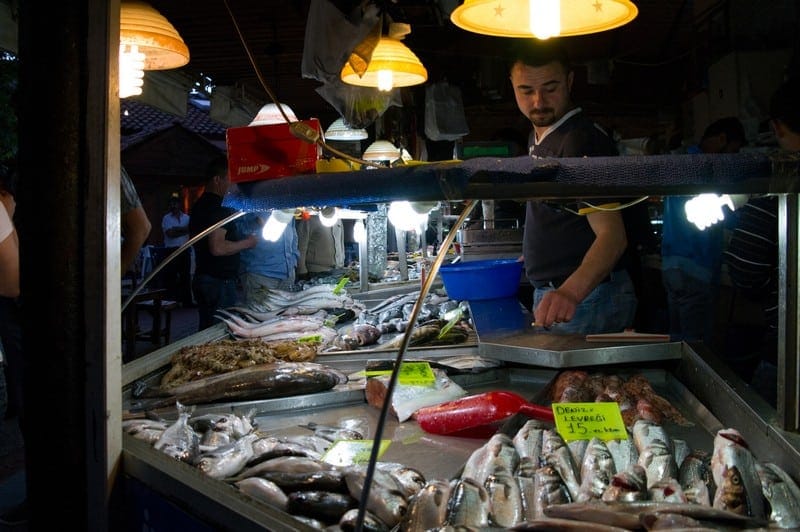
The seafood stand in the middle is where all the action is.
Seeing the confusion spreading across our faces, we were approached by one of the English-speaking waiters. He quickly explained that we were to select and pay for our dinner from any fishermen. They would prepare our seafood to our liking, whether prawns with shells off, chopped calamari, or whole snapper.
We would then bring our bounty in plastic bags back to the restaurant of our choice, where for a measly 6 – 8 Turkish Lira (US$4 – 5), they would cook our seafood. Included in the price was all-you-can-eat salad and bread—a bargain.
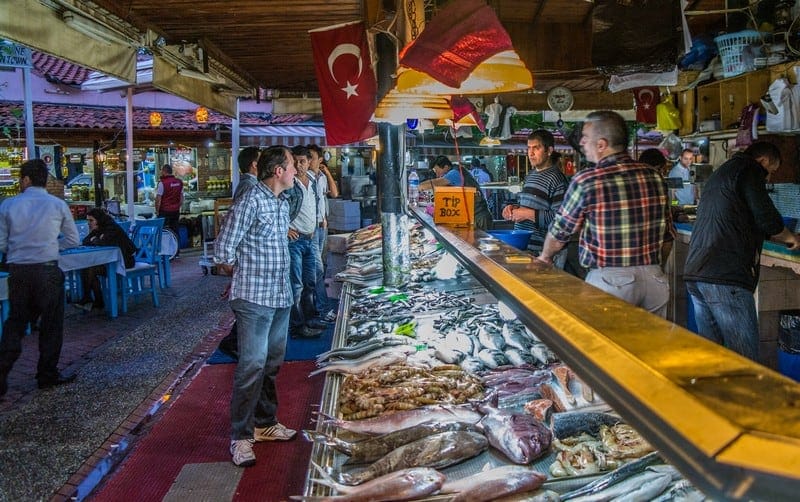
Strolling around the stand several times, we were waved in with friendly smiles and broken English.
While the fishers were all competing, they were all friends. The mixed banter between them as they enticed us to their stalls was good-natured, and there was a lot of it.
With so many options, it was hard to decide on what we wanted to eat. We were eyeing the sailor-style mussels But as a sucker for calamari, that was immediately diced and thrown into our bag. As well as king prawns, a side of quickly filleted fish, and a couple of pieces of tender salmon.
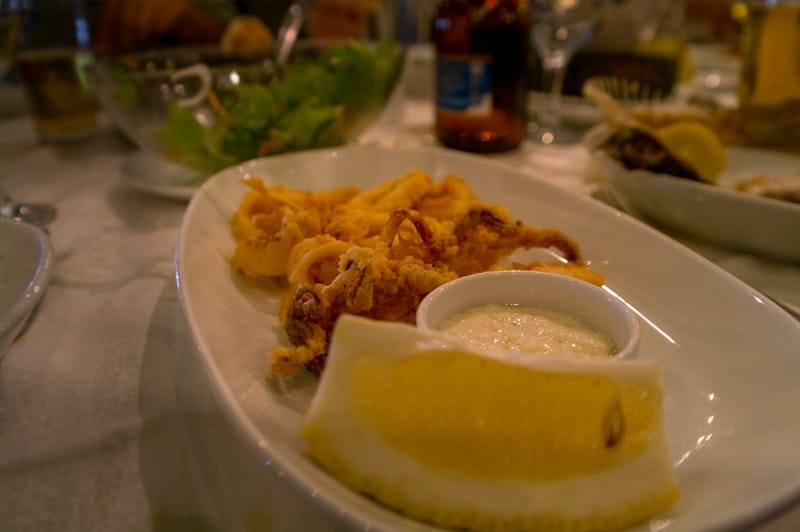
Handing our bags of fresh seafood over to our waiter, we began downing the local Turkish beer, Efes, and watching as other locals and tourists joined the crowds in the square.
It wasn’t long before we were tucking into our meals. Each plate was perfectly cooked to our specific liking. Each morsel is as succulent as the next. And with 8 of us in our group, there was a lot of sharing and mixing of meals as we all wanted to try what others had.
The Fethiye fish market was the perfect way to finish another incredible day in Fethiye.
What do you think of the Fethiye fish market? Sound amazing?!
Cole is one half of New Zealand's leading adventure travel blogging couple who have been wearing out their jandals around the world since 2009. He loves any adventure activities and anything to do with the water whether it is Surfing, Diving, Swimming, Snorkeling or just lounging nearby on the beach. You can follow Cole on Google+. Or consider following us via RSS Feed, Twitter, Facebook and subscribe to our Newsletter.

Asia
12 Pieces of Useful Advice for First-Time Travellers to Singapore
Published
8 months agoon
December 1, 2023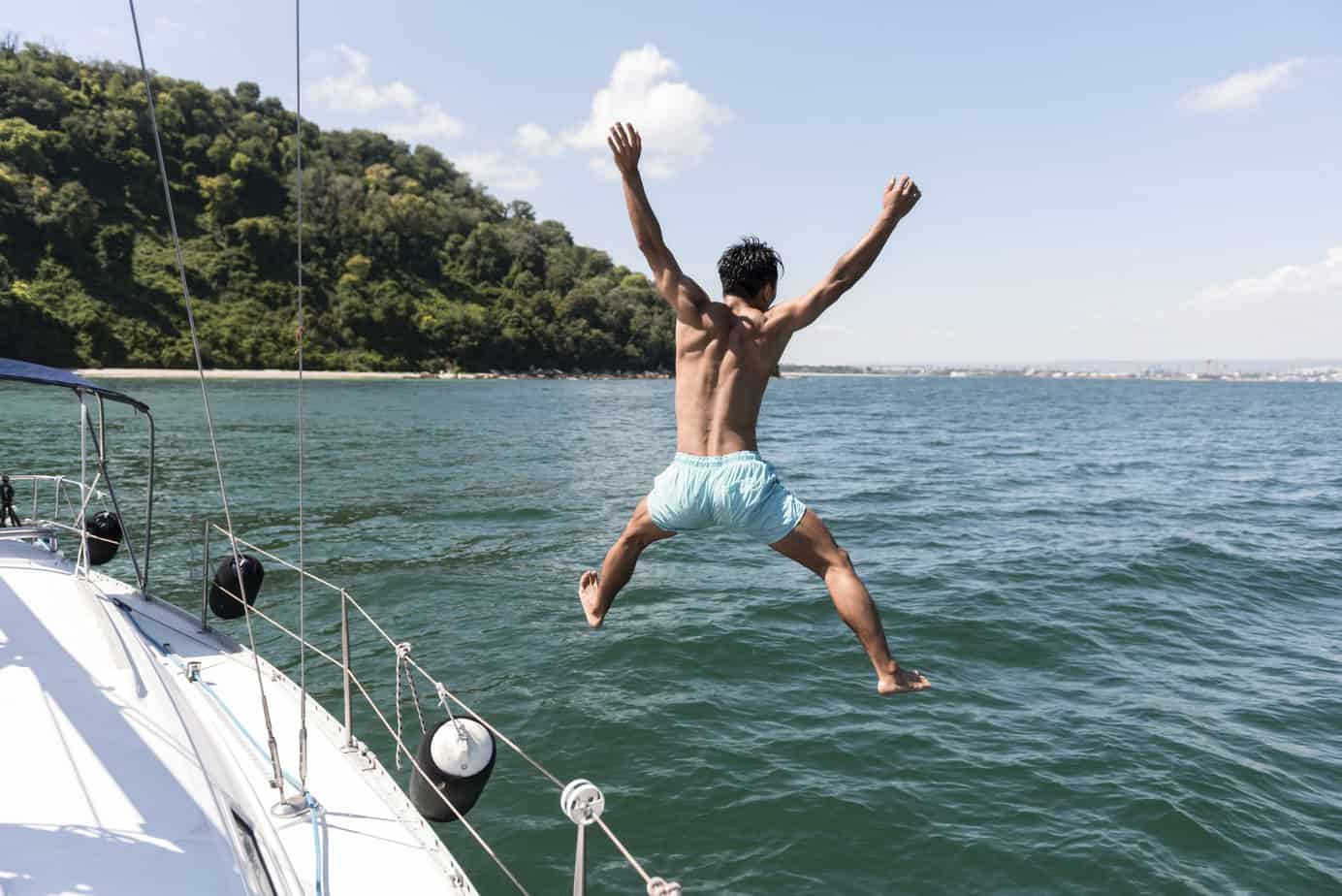
With its futuristic image, vibrant innovation ecosystem, and uniquely syncretic culture, Singapore attracts millions of tourists and business travellers each year. If you’re planning your first trip to Singapore, you’ll want to throw out all your assumptions about the country. As small as it is, Singapore’s culture is truly unique, with few real comparisons to be made with its neighbours or other highly developed nations. To ensure that your stay is pleasant and memorable for all the right reasons, be sure to follow these useful pieces of advice:
Bring an Unlocked Phone
Ensure you have an unlocked phone so that you can easily purchase a local SIM card upon arrival. Having a local number will give you access to affordable data plans and make it convenient to stay connected during your trip. Check out local metasearch engines to find the best SIM-only plan Singapore‘s stores have for international travellers.
Familiarise Yourself with Local Laws and Customs
Respect the locals and take the time to learn about everyday Singaporean customs, such as removing your shoes before entering someone’s home, covering your shoulders and knees when visiting religious sites, and not staring directly at people. Importantly, be sure to also look up local laws governing public conduct, as Singapore is often called a “fine” city for good reason.
Dress for the Climate
Singapore technically has two seasons: a ‘dry’ season that lasts from March to August and a ‘wet’ season that lasts from September to February. However, despite the names of these seasons, it can rain at any time and can likewise be hot and humid throughout the whole year. Leave your winter boots and leather jacket at home and opt for breathable clothing and practical shoes to stay comfortable while exploring the city. Don’t forget to pack a hat, sunglasses, and sunscreen as well.
Purchase an EZ-Link Card
Invest in an EZ-Link card, a reloadable contactless smart card that can be used to pay for rides throughout Singapore’s excellent public transportation system. Interestingly, you can even use the card to pay for items at some retail outlets. If you’re moving around the city by yourself, the EZ-Link card will save you time and money compared to purchasing single-trip tickets.
Explore Singapore’s Hawker Centres
Don’t forget to visit a few of the country’s world-famous hawker centres. These food centres house multiple food stalls, most of which are serving signature dishes like Hainanese chicken rice, laksa, and char kway teow. Be sure to keep an eye out for stalls serving Peranakan dishes to partake in less-touristy and truly authentic Straits cuisine.
Embrace the Diverse Food Scene
While Singapore’s culinary soul lies in its homes and hawker centres, it is also a haven for international and fusion cuisine. The country lives for culinary thrills, so be sure to do some research and hit up restaurants, cafes, and hole-in-the-wall eateries that appeal to you.
Stay Hydrated
Between Singapore’s tropical climate and all the walking that you’re bound to do when exploring the country, it’s important to stay hydrated. Carry a reusable water bottle and make use of the many water coolers available throughout the city to refill it. Fortunately, most tap water in Singapore is also safe to drink, so you can refill your bottles at most taps unless there’s a sign that says otherwise.
Be Mindful of the Chewing Gum Ban
You might have thought that it was a joke but it’s true. The sale of chewing gum is mostly prohibited in Singapore except for therapeutic or dental purposes. While you can bring small amounts into the country for personal use, it’s hardly worth the trouble. As Lee Kwan Yew, the country’s first prime minister and the originator of the ban quipped, “If you can’t think because you can’t chew, try a banana.”
Carry Cash with You
While cashless payment methods are becoming more popular in Singapore, it’s still a good idea to carry some local currency for small vendors and the many establishments that are still strictly cash-only. In particular, many food stalls at hawker centres will only accept cash payments.
Visit Only the Attractions That Interest You
Even though it’s as small as it is, Singapore offers hundreds of unique attractions, catering to all tastes and interests. There’s so much to do that many locals have not fully explored their own country themselves. If you’re only going to be in the country for a week or so, avoid visiting popular places for the sake of visiting them; instead, choose places that are more likely to be more meaningful to you.
Take Advantage of Free Attractions
While Singapore is admittedly quite an expensive country to visit, it also offers several free attractions that are worth exploring. Places like the Singapore Botanic Gardens, Merlion Park, Fort Canning Park, the Buddha Tooth Relic Temple & Museum, and the various ethnic enclaves are an excellent way to experience the city without breaking the bank.
Don’t Forget to Flush
Singapore is known for its strict regulations when it comes to cleanliness, and this extends to public restrooms as well. One notable requirement is the legal obligation to flush any toilet that you use. If you think you can get away with not flushing, think again. Undercover police have been known to check stalls and issue fines to offenders.
Singapore is a melting pot like no other. With its modern attractions, rich mix of cultures, and innovative spirit, the city-state has more than enough to offer. By following the tips above, you’ll be well-equipped to make the most of your first—and probably not your last—visit to Singapore.
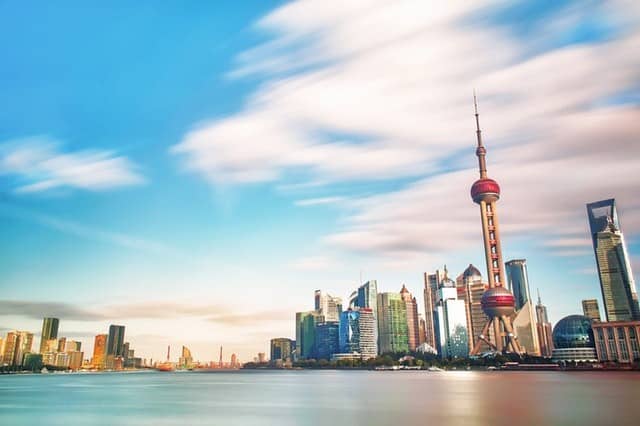
The People’s Republic of China is an amazing country, with an ancient history steeped in wonder and so many modern marvels to explore. This fascinating and unique country is the most populated country in the world, as well as one of the largest by land mass.
Many of the people who live here still abide by their traditional Chinese culture, but the country has always been at the forefront of innovation too, graduating more science, technology, engineering, and mathematics students than any other country in recent years.
You probably already know that China is the world’s longest continuous civilization, that its Great Wall is the largest manmade structure on the planet (but contrary to popular belief, is not visible from space), and the Silk Road is the oldest and longest trade route ever; however, did you know that China is also responsible for the creation of our modern decimal and binary systems, algebra, geometry, and the discovery of the human circulatory system?
Did you also know that 1.7 million pigs are consumed daily in China and that one weird delicacy is ‘urine eggs’ which are eggs boiled for 24 hours in the urine of young boys? Neither did we! Here are ten more amazing facts about China that you probably didn’t know:
China has only one time zone
Despite being the third-largest country in the world by square mileage (China is almost as wide as the US) and technically spanning five time zones, the whole country has operated under one single time zone since 1949, when ‘Beijing Standard Time’ was made official by the Communist Party. That means when it’s 6am in Beijing, it’s also 6am across the other side of the country – even though the sun won’t rise for approximately three hours.
Most schools, transport services, and other Government services in the westernmost region of Xinjiang obey Beijing time, while many local businesses stick to their own time. This means kids are walking to school by starlight, while later, some locals are getting caught up in rush hour traffic… at 7pm!
Chinese new moms are meant to ‘sit’ for four weeks
You might have heard that couples in China need to apply for a ‘Family Planning Certificate’ to have a baby, but did you know that after the birth, new moms are customarily meant to stay in confinement for a month?
This tradition – called ‘Sitting the Month’ – involves the new mother resting in bed for a month, not exposing herself to people or any conditions that may cause stress, such as exertion, cold weather, emotional stress, and traditionally, even water!
Being physically wet was thought to pose a health risk to the mother, as she may catch a cold if she’s exposed to these elements through bathing and hair washing. Thankfully, avoiding water is less often practiced these days, but mothers (and sometimes fathers) still regularly participate.
The confinement is designed to give the mother rest and recover from the birth, ensure both her and her baby aren’t exposed to unnecessary threats, improve breastmilk production and strengthen the maternal bond.
Soccer was invented in China
The ancient Chinese not only invented paper, gunpowder, printing and the compass, but they also invented the concept of soccer (or football, if you prefer). The game of ‘cuju’ – which means ‘kick the ball with foot’ – was regularly played during the Han Dynasty (206 BC-220 AD). The popularity of cuju then spread to neighboring countries and the rest is history!
You can’t access western websites in China
While China is undoubtedly a captivating country with unsurpassed beauty, fascinating history, and amazing people, the current Government doesn’t really want to dilute it all with western influence, so they have created a state of heavy censorship, banning many western internet sites.
If you were considering a visit to China, don’t expect to be able to browse Google, Facebook, Twitter, Youtube, or Reddit sites, just to name a few – these have been blocked by what many have dubbed the ‘Great Firewall of China’.
The Government has even attempted to block methods for circumventing their firewall, including blocking the use of many VPNs. Thankfully, it’s still really easy to bypass this firewall using VPNs, but only if you know which ones still work!
The Chinese heavily censor their film industry
There is no film rating system in place in China, but that doesn’t mean it’s a haven for 12-year-olds who want to watch adult-only films. Films are censored for the same reasons as the country’s internet.
Instead of ratings, there is a 36-person committee that ensures nothing untoward or inappropriate makes it through to Chinese audiences. When they find something too raunchy, violent, flamboyant, or insulting to China, they simply cut the entire scene out of the film before releasing it to the public!
These cuts include the famous nude painting scene in Titanic being removed, a whole minute of ‘Bohemian Rhapsody’ being cut due to a man-on-man kissing scene and drug use, as well as 13 minutes of ‘Men In Black 3’ being removed because it featured an alien disguised as a Chinese person.
Chinese manners are a little different
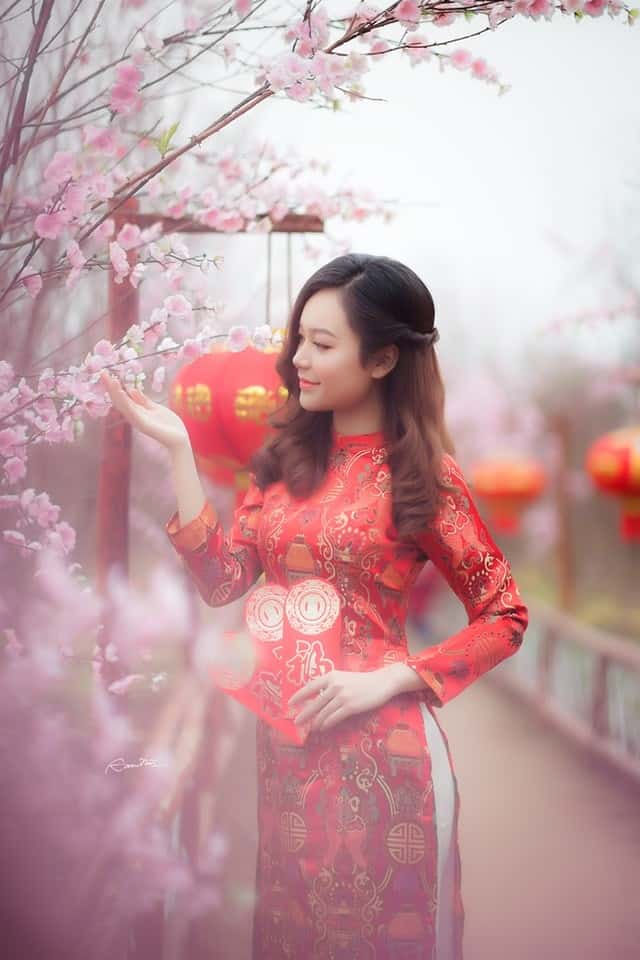
Many countries think burping after a meal shows that the meal was delicious and is a sign of good manners, while other countries don’t blink an eye at spitting in the streets. There are also plenty of people who don’t think yawning wide or grunting are rude – in China, all of these are totally acceptable while eating!
Even more interesting is the country’s lack of diaper use. Older babies and toddlers who are able to use a potty don’t wear them. Instead, they wear special pants with a split in the rear and when they need to go potty, they squat wherever they feel like it and go. We don’t just mean outside either. It’s acceptable for the youngest Chinese citizens to poop or pee wherever they feel the need to, inside or out!
China is full of cavemen
Not really, but close! Due to inheritance, tradition, and sometimes poverty and lack of affordable housing, an estimated 35 million Chinese people live in caves. The majority live in the yellow, porous cliffs and hillsides of the Loess Plateau in Shaanxi province. The Government has attempted to move them on but the long-term residents love their cave homes and refuse to budge.
The Chinese do actually eat canine meat and also invented the first ice cream
Most people have heard the rumor that Chinese people eat dogs and this is actually no rumor. In the city of Yulin for one day per year, the residents celebrate the summer solstice by eating dogs bred for this purpose. Dog meat is eaten as a tradition that started 4000 years ago.
Another ancient tradition that started around the same time is the milk-based treats that the Chinese invented, made with yaks milk and rice and cooled with saltpeter (potassium nitrate) and snow poured on the outside of the containers. Yes, these were the first milk-based ice treats most similar to what we now think of today as ice cream.
The Chinese are masters of war
You may think that large gas and chemical weapons are a fairly modern invention, but the Chinese were actually the first to poison people on a mass scale, with incendiary weapons being reportedly used as early as 200BC according to Sun Tzu’s ‘Art of War’.
There were also reports of arsenic gas bombs being used by the Chinese as early as 1000BC and their war history is littered with similar references and hundreds of recipes for weapons of mass destruction, like the supernatural-sounding ‘soul-hunting fog’. They may have also been the first country to utilize covert spy operations, as they invented kites to gather military intelligence about 3000 years ago.
The Art of War is itself a bible of warfare tactics and many strategies from the book are still used today. While the Chinese have always been ruthless to their enemies, they aren’t completely war-oriented – Shanghai was the only port in the world who were accepting Jewish people without visas during the holocaust.
China has the World’s largest army
The Chinese aren’t only masters of war historically, but they are also well-prepared for any future combat. The People’s Liberation Army boasts the largest number of soldiers on the planet, with more than 2 million soldiers. It also has the second largest defense force budget and is almost considered a military superpower.
Adventure Travel
Outdoor Activities in Bangkok – Adventure City Guide
Find out how you can explore the streets, canals and local markets within minutes of Bangkok with our Outdoor Activities in Bangkok Adventure City Guide.
Published
2 years agoon
April 22, 2022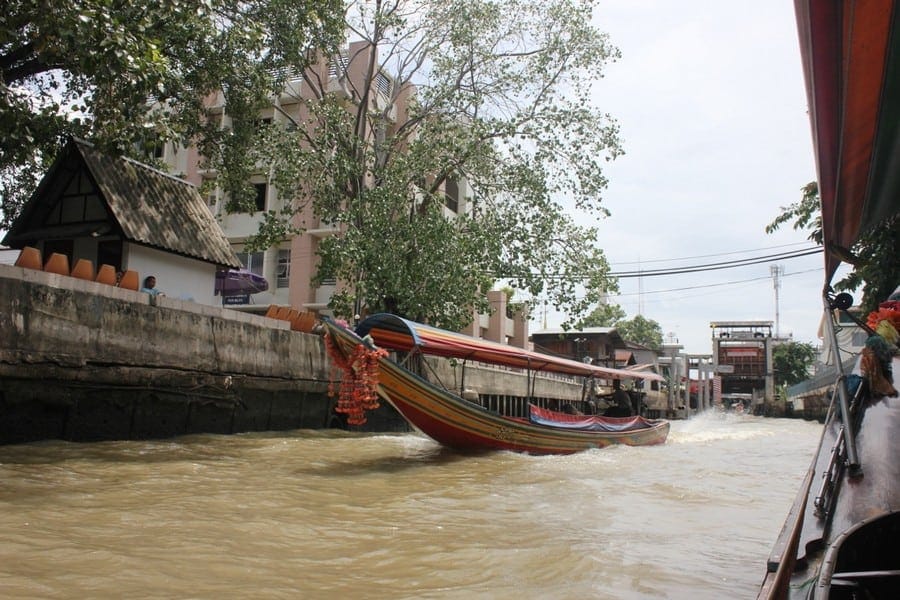
Are you looking for an insider’s adventure travel guide for the best outdoor activities in Bangkok?
As part of our Adventure City Guide series, Ian from Where Sidewalks End shares his expert insider tips on the top adventure and outdoor activities to do in Bangkok.
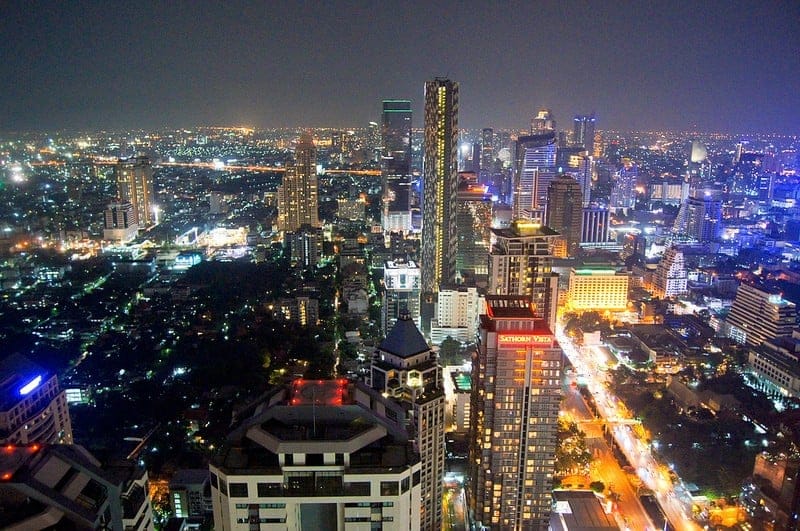
Outdoor Activities in Bangkok – Adventure City Guide – Photo by Evoflash
Why visit Bangkok for adventure?
Bangkok is one of the world’s largest metropolises and a gateway for most of the world to access the rest of South East Asia. With numbers surpassing 14 million people in the Greater Bangkok Region, this is no small player in the world’s super-cities. Of course, having such a long history with foreign visitors, the city has become incredibly established in the world’s tourist sector.
This has allowed it to grow many facets of adventurous activities – making access to something for everyone!
Outdoor Activities in Bangkok
Exploring the Klongs

Outdoor Activities in Bangkok – The Klongs
Klongs are canals that used to feed the entire city with life-giving water, branched off from the city’s main artery – the Chao Phraya River. Today, the locals wouldn’t drink the water if you paid them, but there is still a fascinating life along the Klongs’ banks. There is so much to explore, from floating markets to old houses on stilts, and it gives insight into this ancient way of life!
What’s it cost, and how to get to the Klongs?
You can usually arrange the Klongs from the pier “Saphan Taksin” along the Chao Phraya River. This is conveniently a stop on the Skytrain, making it very easy to access. Usually, you will be renting the entire boat for the day (about 1000 THB, or USD 35) and not paying a per-person rate. So if you can find a few people to go with, the price will drop significantly per person.
Rickshaw City Tours
If you’ve never been to Asia before, Rickshaws are one of the most fun ways to get around. Although they can often be a little more expensive than metered taxis, you get an experience (and a view) that is unparalleled, especially in the busy streets of Bangkok.
What’s it cost?
Occasionally, you can even haggle a deal for a city tour for next to nothing (50-100 THB or $1.50-3 USD), as long as you visit a couple of affiliated ‘custom suit tailors’ throughout the day, as they’ll get a kickback from the shops just for bringing you there… No purchase is necessary.
You can often find Tuk Tuk drivers willing to do this standing along the perimeter of the Kings’ Palace. It may take a few attempts of asking for a ‘special city tour,’ but you will be bound to find someone ready for a cut of this business.
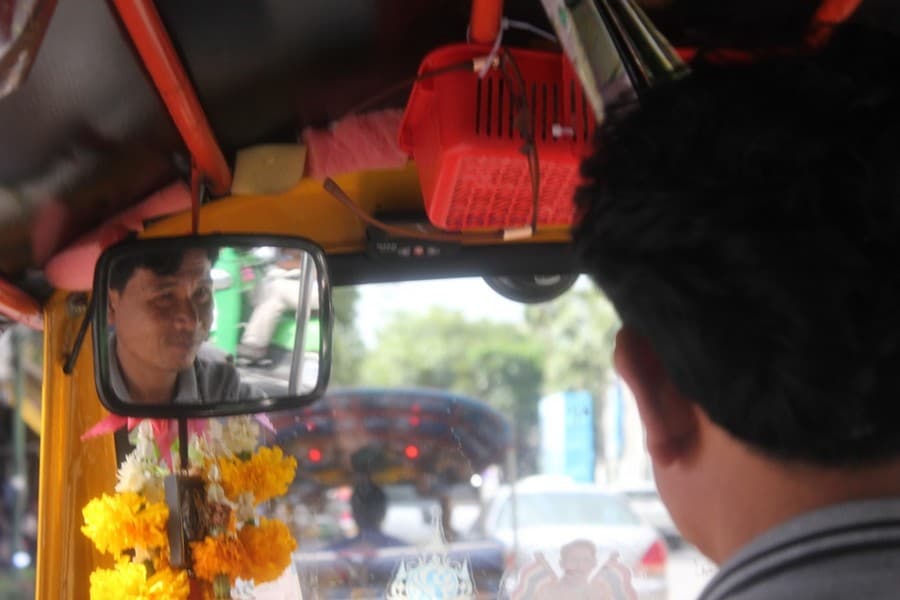
Outdoor Activities in Bangkok – Rickshaw Tours
Local Secret Spot
Chatuchak Market
Though most people wouldn’t consider going to a market an adventure, they probably have never experienced the likes of Chatuchak (also known as JJs). This is one of SE Asia’s LARGEST outdoor markets. It’s so prominent that you can find maps of the market to help navigate. It’s roughly the size of 4 city blocks and is divided into various sections.
You’ll find everything under the sun here, from clothing to handicrafts, food, mobile phones, and even puppies and other cute critters for sale!! It’s bonkers. If it gets too much for you, you can take a break in one of Bangkok’s most famous parks (Chatuchak park), located next to the market.
How to get there?
You can get here via Skytrain (BTS), subway (MRT), taxi, bus, you name it – it’s very accessible! But it’s only open on weekends, from about dawn until 5 or 6 pm at its peak. Some shops stay open longer, but most will be closed by dusk. It’s free entry and a perfect place to buy ANY souvenirs at the end of your time in Thailand.
Suppose you can coordinate to be here on the weekend. I generally hate shopping for ‘stuff,’ but I love this market and its energy!
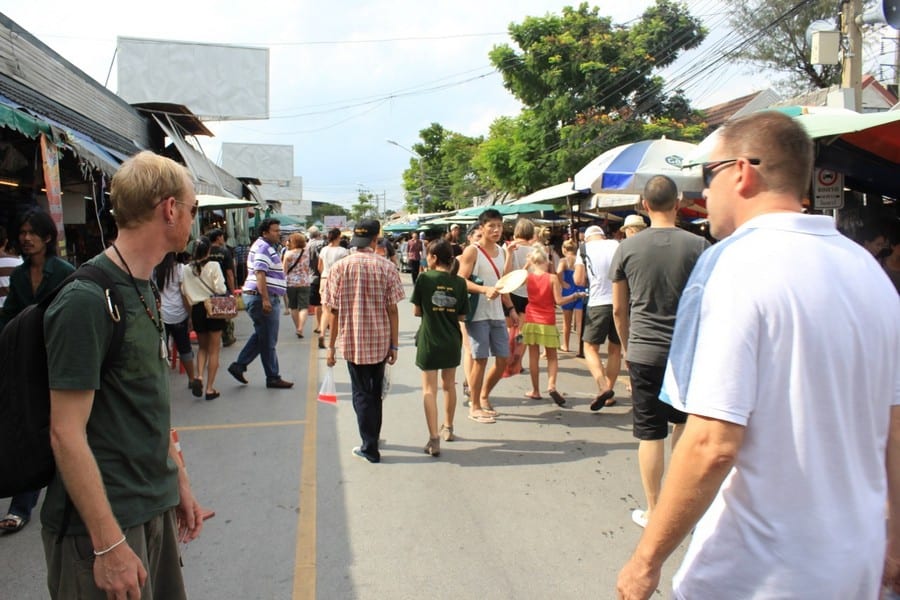
Outdoor Activities in Bangkok – Chatuchak Markets
Best time of the year to visit Bangkok for adventure?
Bangkok is in the tropics and quite close to the Equator. Of course, this means it’s hot on a year-round basis.
It’s considered the rainy season from May to October, though showers can happen at any time of the year. This is generally a less busy time for tourists, though the rains are not quite as bad as expected and often only last 30 mins-1 hour, cooling the city’s heart. Peak season is in December-January when temperatures are at their most astounding ad driest… though it’s still pretty hot!
And if Bangkok isn’t to your taste, the luxury Koh Samui will be. Endless sandy beach, beautiful clear waters, and nightlife that could be lived in forever. The luxury rental properties are stunning, and we recommend Tempston Luxury villa rentals.
Finally, the reason I love Bangkok for adventure is that…
It’s never-ending. This city is SO BIG that you could get lost in a new neighborhood almost every day. Single. Day. And still find new, exciting things to explore. On my list for the upcoming weeks, I’ve got the Scala Cinema, the Thai Air Force Museum, Papaya Vintage Shop, and the Erawan Museum – to name a few. Every time I explore one place, I learn of 3 more!!
BIO:
From a young age, Ian was always a wanderer. He’s since travelled to all 7 continents, and has spent the majority of his life pursuing this passion. You can follow him in his off-the-beaten-path adventures and discoveries on Twitter, Facebook, Google+ and his travel blog Where Sidewalks End.
Have you been to Bangkok? What were your favorite outdoor activities in Bangkok?
Meet Cole and Adela
 We have been wearing out our jandals (Kiwi for flip-flops) on our travel adventures around the world since 2009. We think our blog is thought provoking and a little witty. But we have been proven wrong before. Find out more about us here...
We have been wearing out our jandals (Kiwi for flip-flops) on our travel adventures around the world since 2009. We think our blog is thought provoking and a little witty. But we have been proven wrong before. Find out more about us here...
Find
New on Four Jandals
What Are You Looking For?
- Adventure Travel (235)
- Africa (25)
- Asia (31)
- Auto (2)
- Business (5)
- City Guides (26)
- Entertainment (7)
- Europe (177)
- Food (16)
- Home (4)
- Inspiration (12)
- North America (51)
- Oceania (32)
- Other (219)
- Personal Musings (9)
- Reviews (16)
- Technology (11)
- Travel Blogging Tips (9)
- Travel Tips (282)




